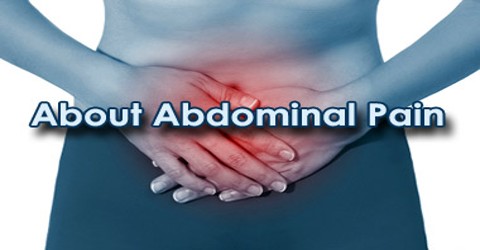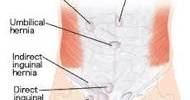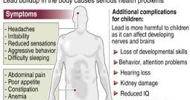About Abdominal Pain
Definition
Abdominal Pain or pain in the belly is the reason for around 5% of all emergency department visits. It is a symptom but may signify a life-threatening condition underneath. Abdominal pain can be mild or severe. It may be continuous or come and go. It can be acute or chronic. It may reflect a major problem with one of the organs in the abdomen, such as appendicitis or a perforated intestine, or it may result from a fairly minor problem, such as excess buildup of intestinal gas.
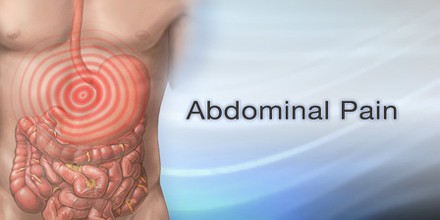
Abdominal Pain is felt in the abdomen. The abdomen is an anatomical area that is bounded by the lower margin of the ribs and diaphragm above, the pelvic bone (pubic ramus) below, and the flanks on each side. Although pain can arise from the tissues of the abdominal wall that surround the abdominal cavity such as the skin and muscles, the term abdominal pain generally is used to describe discomfort originating from organs within the abdominal cavity. Organs of the abdomen include the stomach, small intestine, colon, liver, gallbladder, spleen, and pancreas.
Occasionally, pain may be felt in the belly even though it is arising from organs that are close to, but not within, the abdominal cavity, for example, conditions of the lower lungs, the kidneys, and the uterus or ovaries. On the other hand, it also is possible for pain from organs within the belly to be felt outside of the belly.
Causes and Types of Abdominal Pain
Abdominal Pain has many potential causes. The most common causes — such as gas pains, indigestion or a pulled muscle — usually aren’t serious. Other conditions may require more-urgent medical attention.
While the location and pattern of abdominal pain can provide important clues, its time course is particularly useful when determining its cause.
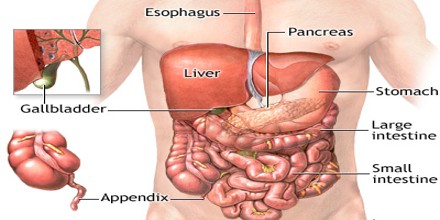
Acute abdominal pain develops, and often resolves, over a few hours to a few days. Chronic abdominal pain may be intermittent, or episodic, meaning it may come and go. This type of pain may be present for weeks to months, or even years. Some conditions cause progressive pain, which steadily gets worse over time.
Sometimes the pain may be acute among patients with an existing condition including those with peptic ulcer disease, acute pancreatitis among alcoholics etc.
Sometimes there may be acute pain in an otherwise normal person. This includes examples like appendicitis, gastritis, biliary colic, gastroenteritis etc.
Acute pain following injury to the abdomen which includes rupture of the liver, spleen etc.
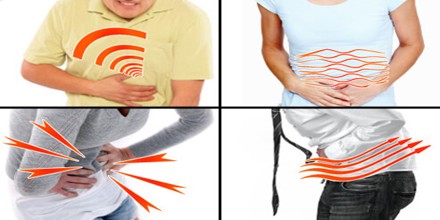
Sign and Symptom of Abdominal Pain
Abdominal Pain can be mild or severe. It may be continuous or come and go. Abdominal pain can be short-lived (acute) or occur over weeks, months or years (chronic).
If abdominal pain comes on suddenly, this may suggest a problem with an organ within the belly; for example, the interruption of the supply of blood to the colon (ischemia) or obstruction of the bile duct by a gallstone (biliary colic).
Seek immediate medical help if pain is accompanied by other worrisome signs and symptoms, including:
- Severe pain
- Fever
- Bloody stools
- Persistent nausea and vomiting
- Weight loss
- Skin that appears yellow
- Severe tenderness when you touch your abdomen
- Swelling of the abdomen

Treatment and Prevention of Abdominal Pain
Medications that are used for the treatment of underlying cause(s) of the pain are the medications of choice. For example, medications are not needed for the treatment of simple viral gastroenteritis (stomach flu or stomach bug), while surgery and/or chemotherapy may be the best approach to treat certain cancers in the abdomen. Other causes may require antispasmodics, antimicrobials, H2 blockers, or even nitrates or morphine. The diagnosed cause usually narrows the choice of medications. A few causes can only be treated by surgery (for example incarcerated hernia, abdominal adhesions from previous surgeries, and certain abdominal injuries), although some medications may be used (for example, morphine) while the person is waiting to have surgery.
The following steps may help prevent some types of abdominal pain:
- Avoid fatty or greasy foods.
- Drink plenty of water each day.
- Eat small meals more frequently.
- Exercise regularly.
- Limit foods that produce gas.
- Make sure that your meals are well-balanced and high in fiber. Eat plenty of fruits and vegetables.
